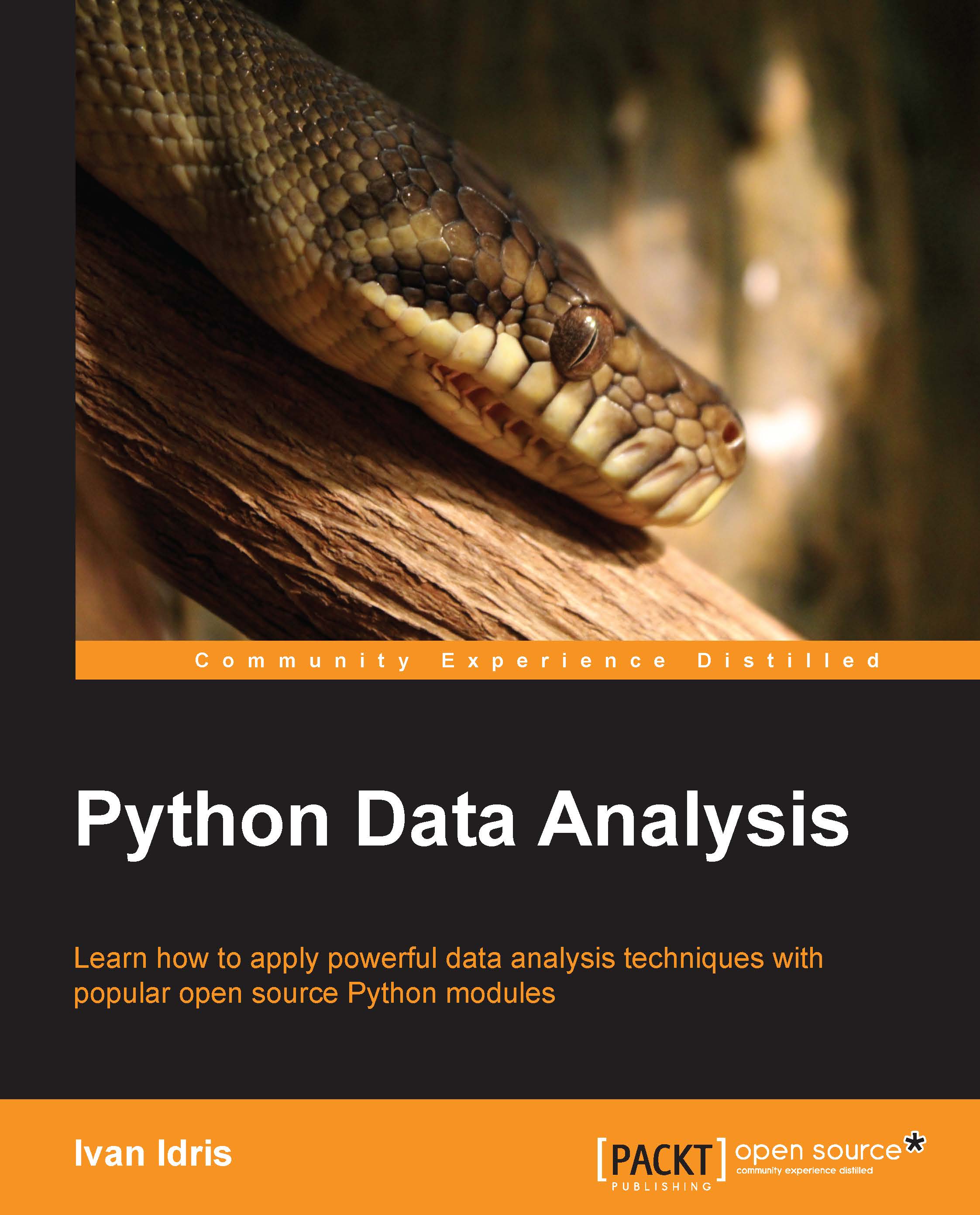-
Book Overview & Buying

-
Table Of Contents

Python Data Analysis
By :

Python Data Analysis
By:
Overview of this book
This book is for programmers, scientists, and engineers who have knowledge of the Python language and know the basics of data science. It is for those who wish to learn different data analysis methods using Python and its libraries. This book contains all the basic ingredients you need to become an expert data analyst.
Table of Contents (17 chapters)
Preface
 Free Chapter
Free Chapter
1. Getting Started with Python Libraries
2. NumPy Arrays
3. Statistics and Linear Algebra
4. pandas Primer
5. Retrieving, Processing, and Storing Data
6. Data Visualization
7. Signal Processing and Time Series
8. Working with Databases
9. Analyzing Textual Data and Social Media
10. Predictive Analytics and Machine Learning
11. Environments Outside the Python Ecosystem and Cloud Computing
12. Performance Tuning, Profiling, and Concurrency
A. Key Concepts
B. Useful Functions
C. Online Resources
Index

